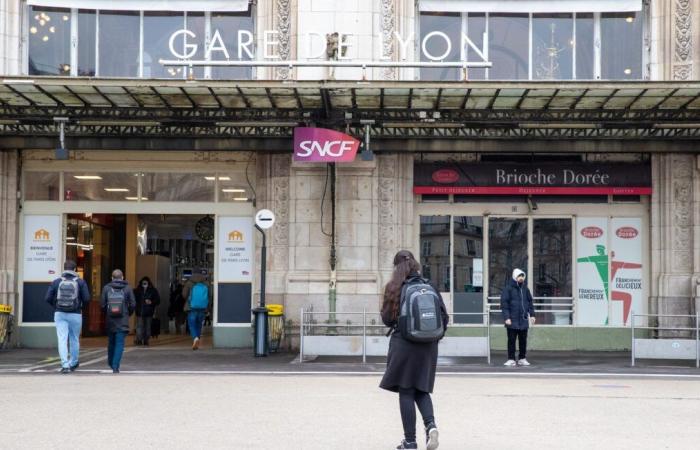This was to be the first step before a large-scale mobilization. While the date of December 11 was marked to begin a renewable strike, the SNCF inter-union* called for a social movement on Thursday in the form of an “ultimatum”, faced with the dismantling of SNCF freight (from January 1 2025).
But the hoped-for pressure did not produce the expected effect: almost normal traffic on the TGV, seven TER trains out of ten and one Intercités train out of two. For paralysis, we had to rely on snow instead.
The flop of the “warning strike”
“Not great” figures by the own admission of Sud-Rail federal secretary Fabien Villedieu, very far from the level of mobilization of certain strikes in recent years (December 2022, stalled strikes in 2018). Enough to wonder, in a slightly exaggerated way, we admit, if the strike culture is fading within the company.
“A warning strike is necessarily less mobilizing,” says Joël Sohier, author of the book Trade unionism in France. The academic invites us not to make hasty judgments on a single day of strike. He recommends considering dynamics over a longer period of time. “We cannot judge the social habits of railway workers on a single strike. We are 18 months after the enormous mobilization against pension reform. A year and a half, on the scale of a social movement, was yesterday. »
Especially since the subject of SNCF Freight is “complex”. Two subsidiaries will replace the public goods transport operator, as decided by former Minister of Transport Clément Beaune. The inter-union is calling for a moratorium, the SNCF management refuses.
Massive movements or categorical mobilization?
“It’s complicated to mobilize the entire body of railway workers on this specific issue,” judges Stéphane Sirot, historian, specialist in trade unionism and social movements. It's easier to come together on more general issues like pensions or working conditions. »
“There are more than 5,000 freight railway workers, the other 145,000 are not there. To say 'I'm affected by freight' is not obvious,” Thierry Nier, general secretary of the CGT Cheminots, pointed out on Wednesday on BFM Business.
Even if, paradoxically, it is a very categorical movement within the SNCF itself (the conductors' strike in 2022) born outside the unions, which allowed one of the last large-scale mobilizations: a strike of the December 23 to 25 with 33 to 40% of TGV canceled.
The union leaders are trying to motivate their ranks so that the renewable strike in December does not turn into a fiasco. “I know that many colleagues do not feel concerned but no one will be preserved,” insisted Fabien Villedieu (Sud-Rail), as reported by AFP.
If the 27 consecutive days of strike to contest Edouard Philippe's pension reform seem far away, there is no need to worry about the future of social protest at the SNCF. “This remains a fairly natural practice of protest, and railway workers do not abuse it,” believes Stéphane Sirot. »
Normally, the number of strike days per year per agent fluctuates between one and two. During years of high mobilization, it rises to “5 or 6 days” according to the specialist. A figure far from confirming the idea of “greviculture” within the company.






